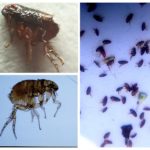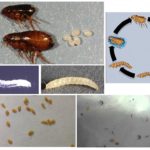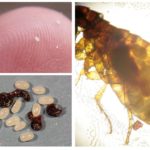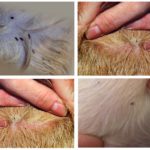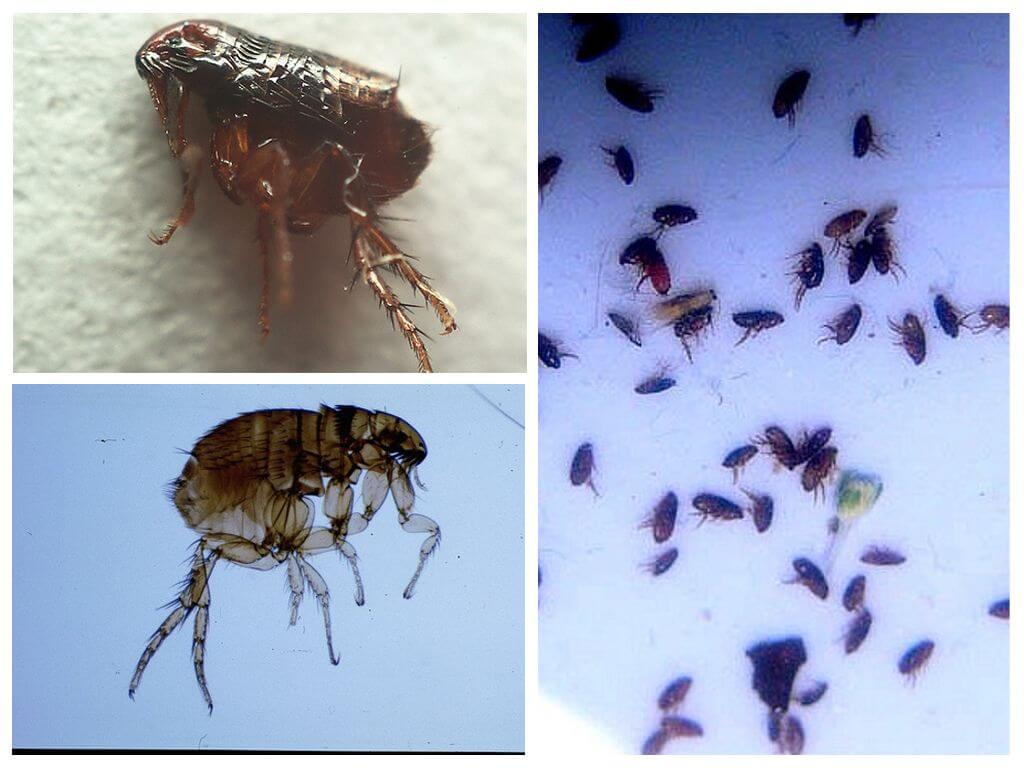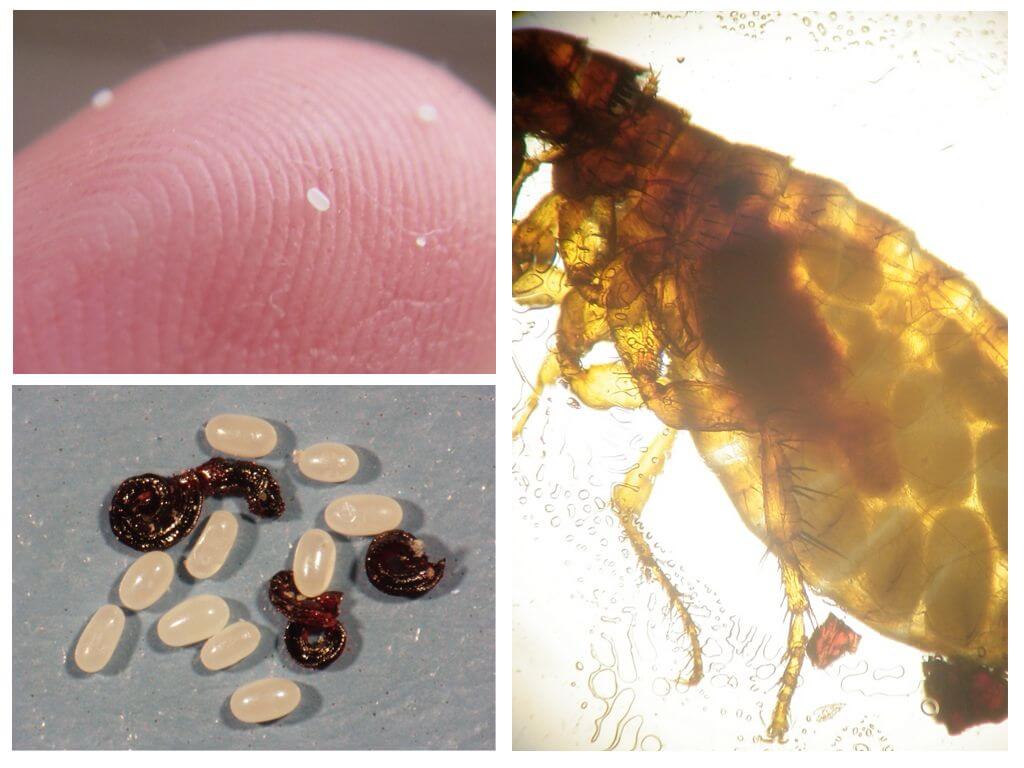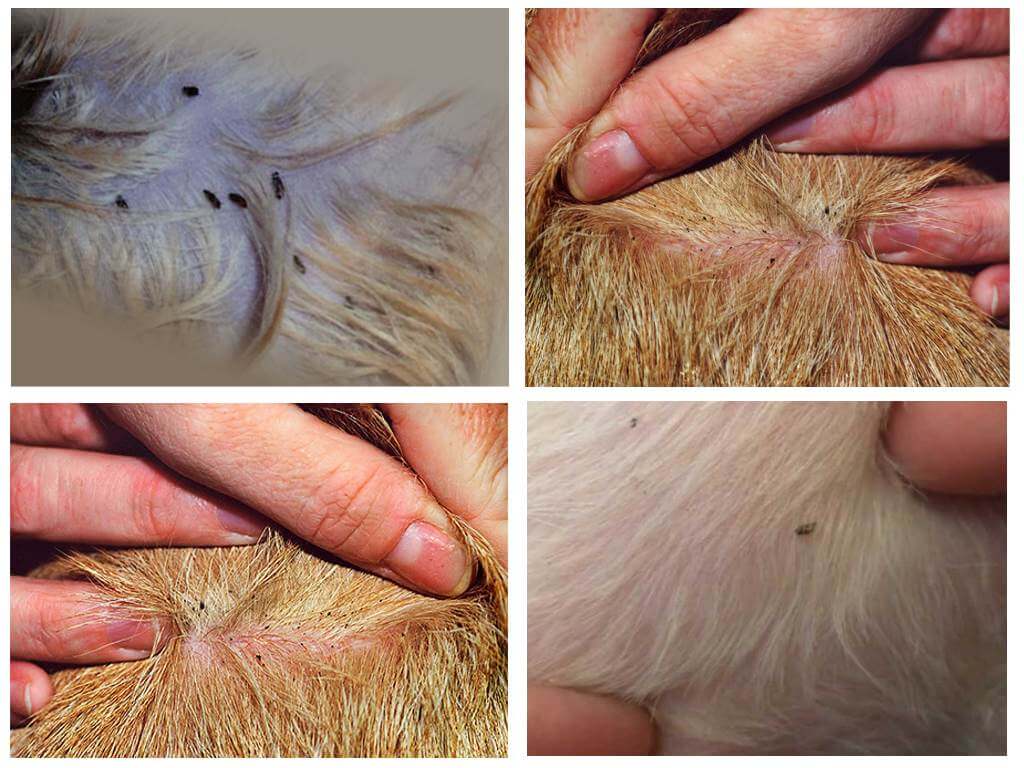Dog fleas
Content
- Dog fleas
- Flea eggs and larvae
- Flea eggs
- Flea in dogs
The dog is a friend of man. With this statement for a long time no one argues. But a friend must always be healthy, so there is a need to constantly do preventive maintenance to your pets because of the appearance a flea on the body of an animal. In order to properly and effectively fight these parasites, you need to clearly understand what are dog fleas.
Flea species
All jumping, running, blood-sucking parasites on the dog's body do not always refer to the type of dog flea Ctenocephalidescanis. They can be joined as humanso and feline, rat and other species of insects that feed on the blood of our pets with pleasure. In dogs, these bloodsuckers are believed to be the most common type of parasite. All blood-sucking is difficult to distinguish from each other without the help of a microscope, so dog owners often call them just fleas.
Appearance
Fleas proved to be versatile and viable insects. They do not have wings, which makes it possible for them to move easily in wool, they feed on blood of both the main owners and other warm-blooded animals with similar blood composition. They can attack a person if they do not find another object for their attention in time.
Looks like a dog flea, like most of the relatives: the size of an insect is 2-3 mm in length, a shiny flat oblong body of dark brown color. The only thing with whom they have some similarities in external features is lice and lashing.
Lice are also very small, painted white, fleas are different from them a darker color and that are on the skin of the animal, and not on its fur. On this basis they are easy to distinguish from lashing. But none of these parasites, except fleas, do not jump.
Interesting!
In appearance, canine and feline fleas can only be distinguished with precision instruments. The head of dog parasites looks more rounded and blunt, there are eight setae on the hind legs, and not six, like those of the cat. Due to the fact that the prevalence of these insects is almost the same, the cat fleas can often be found on dogs, and the dog easily jumps to cats.
The photo of a dog flea, made under a microscope, clearly shows highly elongated hind legs, which help them jump in length 100-150 times farther than the size of their own body.
Stages of development
The female of the parasite, sated with blood, does not stay on its victim. She jumps off the dog and lays eggs, from which later the larvae appear outside the body of the animal. Sometimes, if the dog is heavily infected, the eggs of the parasites can be found in the fur, but this only means that they simply did not slip off the pet. The egg is less than one millimeter in length, therefore it can be detected only in the case of a huge number of them.
The larva of a dog flea looks like a small caterpillar up to 5 mm in size and looks like a maggot of a fly.The larvae feed on various organic wastes, they even eat rotting grass. And only in the nests of birds and other warm-blooded animals they have the opportunity to feast on the excrement of adults, full of blood, which did not have time to digest. After the larvae shed three times and pupate, they are ready to wait for their new host for 30 days.
Way of life
Dog fleas do not live long on the body of their victim. They only feed on dogs, but prefer to live in dark places that are convenient for attacking their breadwinner: under stones, in the carpet, in the furniture upholstery, in the slits of the floor, in the grass and on dog bedding. Here are the eggs and larvae mature. Such shelters and should inspect the first place, if there is suspicion that the dog appeared fleas. Very often they populate the booths and resting places of four-legged.
Breeding fleas happens very quickly. The female once every few days pushes a huge amount of eggs from her body under great pressure and thus increases the area in which her offspring will develop. If this happens on a dog, then the bulk of the eggs will fall to the floor.Therefore, all the way through which the infected dog ran, you can find parasites.
Interesting!
If the flea (taking into account the three-week stage of the larva) is almost in ideal conditions, then it can live for about two years. But in a normal environment, the life of the parasite is reduced to a few weeks. An adult individual can lay about 500 eggs in its lifetime.
Every dog owner knows where fleas can come from at his pet:
- after a walk in the forest (many fleas live in the forest dwellers);
- from other dogs met on the street (and also from a rat or cat);
- from a man who brought parasites on his clothes;
- from being in a room infected with blood-sucking insects.
On a note!
Often dogs grab fleas living on carrion. All the parasites who have been waiting for the new owner for a long time after the death of the previous one, will gladly change their place of residence.
An interesting fact is that insects are sensitive to the amount of cortisol and corticosteroids in the body of a pregnant dog. They are able to instinctively determine the time when puppies should appear in order to safely move to a safer source of food.Parasites can go without food for a long time, hibernating, but they will not multiply in this state.
Signs of fleas in a dog
If your pet becomes restless, sometimes even aggressive, itching and biting itself constantly, pink spots appear on the skin, you need to carefully examine it. Eggs of parasites can be identified on the fur, and adults can settle behind the ears and on the belly of the animal. You can find them in another way: immerse the dog in the water. Fleas instantly start jumping on the head of a pet and on objects in the vicinity.
Get rid of insects need to immediately, as they can to harm not only to animals, but also to humans, causing the appearance of worms and many other dangerous diseases. This type of flea tolerates:
- eggs of cucumber tapeworm, which can be up to 50 centimeters in length;
- plague, anthrax, typhoid, brucellosis, encephalitis, salmonellosis - all these diseases are very dangerous for humans;
- Dogs with sensitive skin and small puppies may experience an allergic reaction to flea bites, leading to a variety of dermatitis and anemia.
Means of prevention and treatment
Exists many waysto get rid of insects in dogs. Animals can be treated using:
- Special sprayWhich is used mainly for adult and healthy dogs, it gives a good and fast result. Leopard and Front line - one of the best sprays.
- Drops on withers for dogsreacting poorly to aerosols. In veterinary pharmacies they are presented in the range: Practitioner, Front line, Bars Forte, Barrier, Advantix, Dana Ultra Neo, Blohnet, Lawyer, Celandine.
- Shampoo - This is the most gentle way, as you can bathe small puppies and animals that are sensitive to other means. The most popular detergents are Leopard and Meadow.
- Flea and tick collars as an effective prophylactic agent such as Celandine. <>Folk remedies, such as decoctions of wormwood, tansy, lavender.
When choosing a means of preventing and treating flea dogs, you must take into account the characteristics of each animal. Ideally, the treatment of the animal should be carried out by means recommended by an experienced veterinarian.Now you know what dog fleas look like and how to deal with them.

